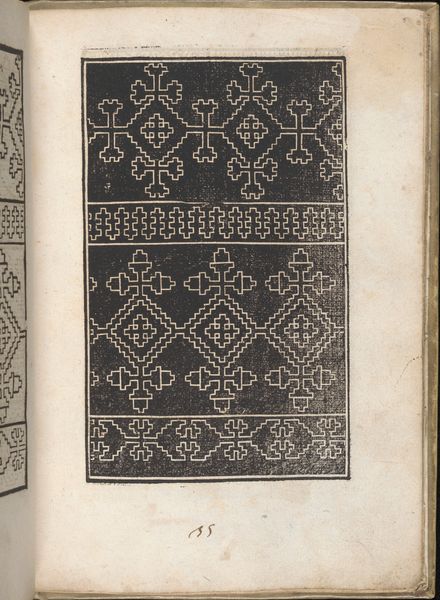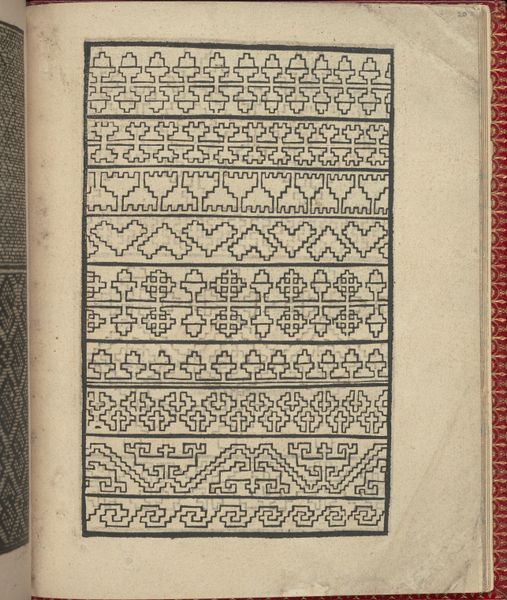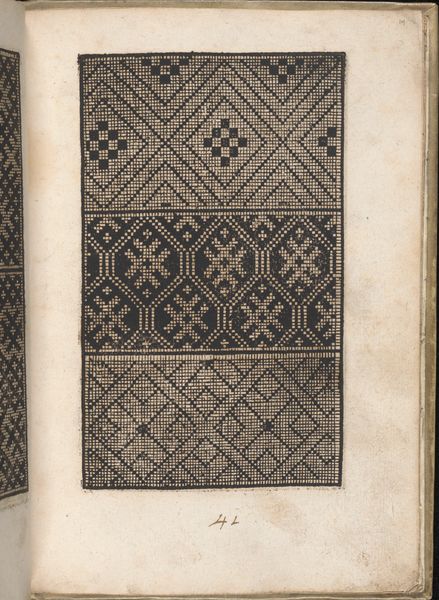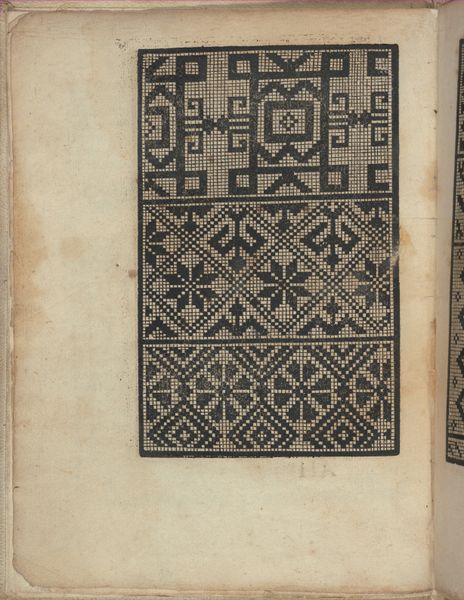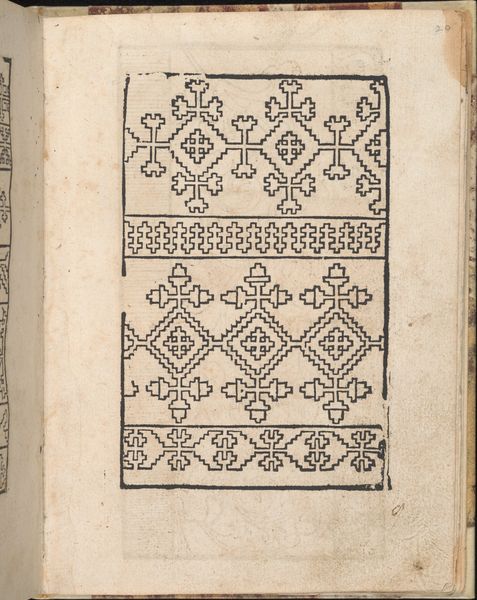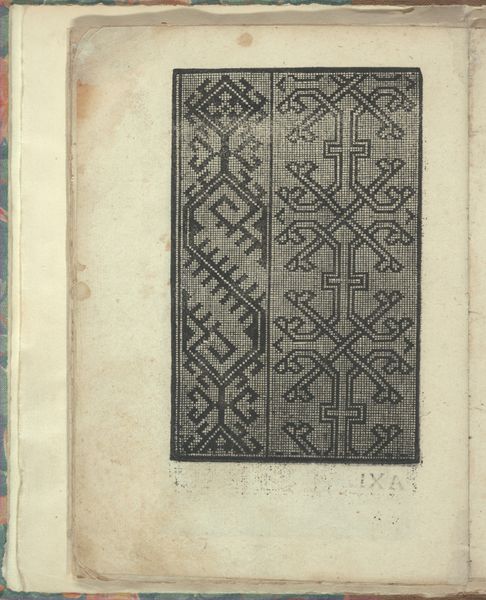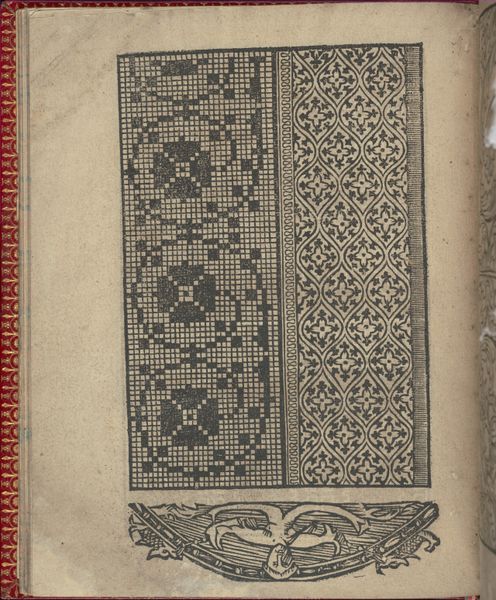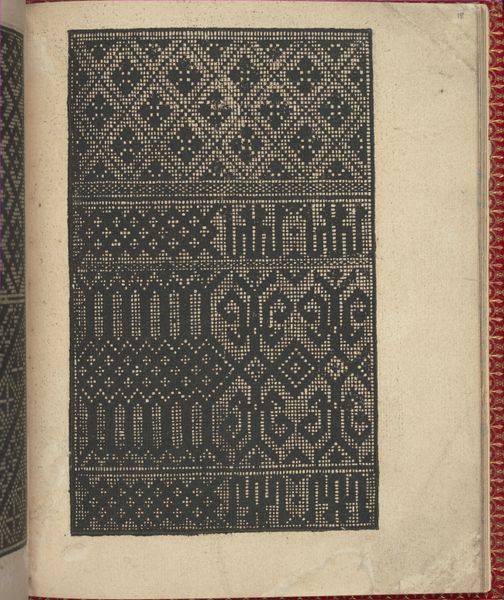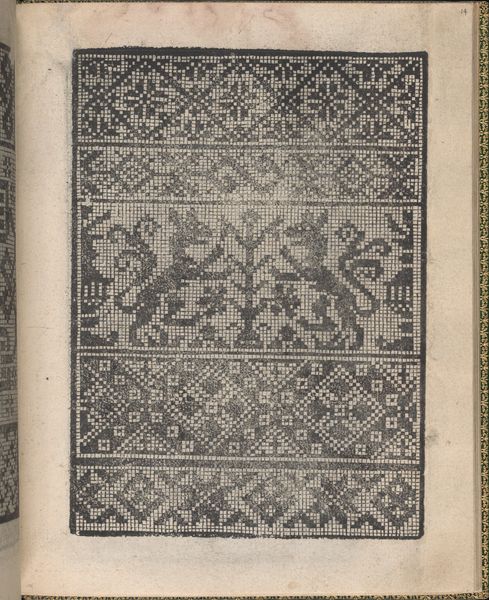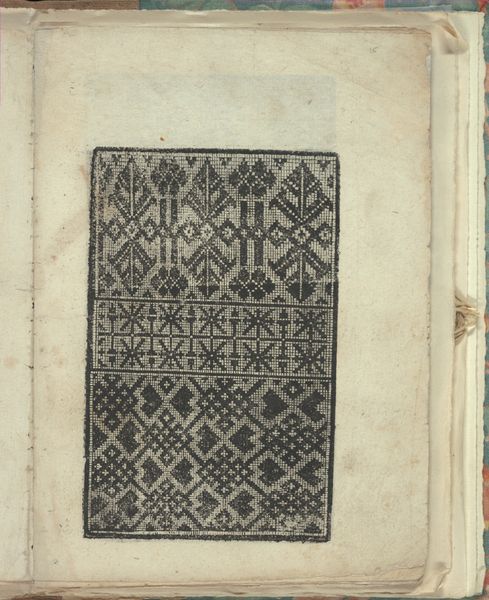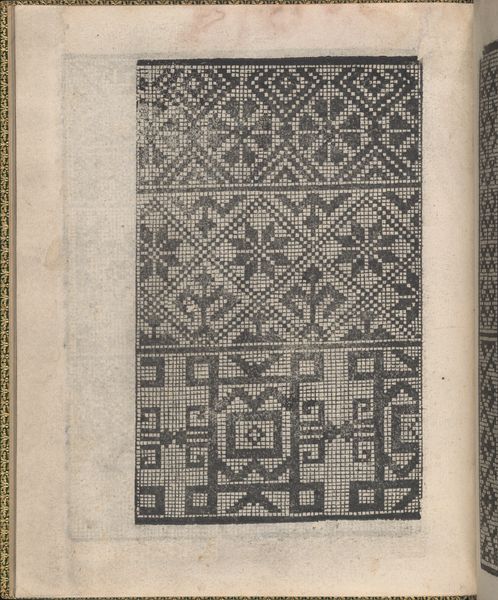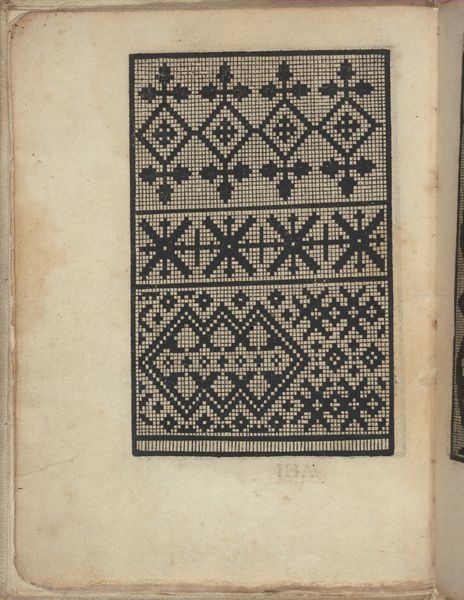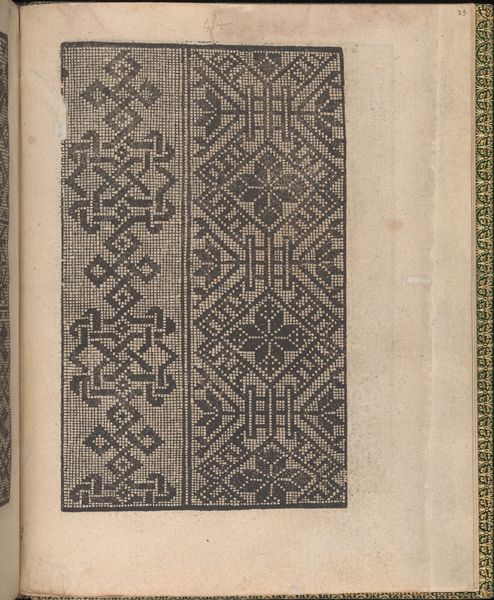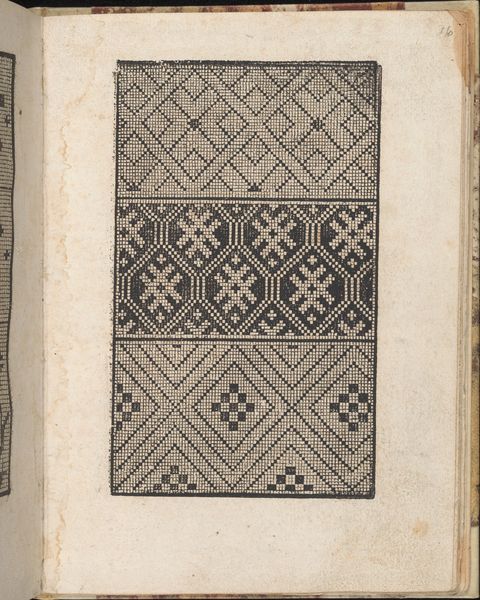
Ce est ung tractat de la noble art de leguille ascavoir ouvraiges de spaigne... page 21 (recto) 1527 - 1540
0:00
0:00
drawing, graphic-art, print, textile, woodcut
#
drawing
#
graphic-art
#
medieval
# print
#
textile
#
geometric
#
woodcut
Dimensions: Overall: 6 7/8 x 5 11/16 in. (17.5 x 14.5 cm)
Copyright: Public Domain
Editor: We're looking at a page from "Ce est ung tractat de la noble art de leguille ascavoir ouvraiges de spaigne..." made between 1527 and 1540 by Willem Vosterman. It's a woodcut print featuring geometric patterns. I find the stark contrast between black and white quite striking. How do you interpret this work within its historical context? Curator: It’s crucial to understand that textiles weren't just functional items; they were potent signifiers of status, religious identity, and even political allegiance. This pattern book, therefore, served as a crucial tool, particularly for women whose identities were often intrinsically linked to their domestic skills and creativity. These designs allowed them to engage in acts of both self-expression and the reinforcement of societal norms. What do you think these designs communicated? Editor: Perhaps a sense of order and control in a turbulent world? Or maybe the ability to create beauty and value through their labor? Curator: Precisely. Furthermore, consider the religious implications of these repeated cross-like motifs during the Reformation. Were these acts of piety, subtle resistance, or simply decorative choices stripped of their religious significance through repetition? And how does this change when considering gender, with these needlework books offering women limited, if any, access to social capital? Editor: That's fascinating. I hadn't considered the potential for subtle resistance. It really highlights how even seemingly simple designs can be charged with complex meaning. Curator: It does. Recognizing these intersecting narratives reveals how art, even in the form of a pattern book, functions as a historical document and site of social commentary. It prompts us to ask, whose stories are privileged in art history and whose are marginalized, even erased? Editor: Thinking about it as a historical document opens up so many new ways to interpret the work. Thank you! Curator: Indeed! Keep in mind that even a small image like this has big things to teach.
Comments
No comments
Be the first to comment and join the conversation on the ultimate creative platform.
